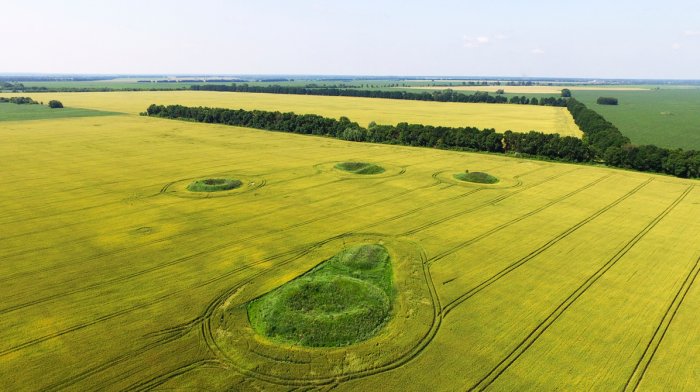Giant 7,000-Year-Old Astronomical Calendar Discovered In Poland?
AncientPages.com - At first sight, these large circles discovered in a field near Oława, a town in south-western Poland remind us of a crop circle. However, what we are seeing are actually contours of a giant monumental structure. Archaeologists estimate our ancestors erected the structure between 4900-4600 B.C.
What is even more intriguing, is that researchers say this puzzling structure could be part of a giant 7,000-year-old astronomical calendar or perhaps an ancient solar observatory.
The outlines are so clear that archaeologists have been able to reconstruct the monument without any digging tools. The structure consists of a double ditch system. Inside the circular structure there are marks of a building that can be reached through four entrances.
According to Dr. Mirosław Furmanek from the Institute of Archeology, University of Wrocław who is investigating this mysterious structure this is the work of an unknown Stone-Age community. The structure is made of wood and it was built with simple tools.
It’s a unique ancient construction and scientists have one discovered three similar structures in Poland so far. One is in Biskupin, and the other have been unearthed in Bodzów near Głogów and Chojna in the vicinity of Szczecin.
Credit: Norbert Pająk
The purpose of the giant circular wood structure in Oława is unknown. It could have been used as a ceremonial center, a temple or an astronomical observatory.
See also:
Bezvodovka: Little Known Ancient Solar Observatory In Ukraine Reveals Its Secrets
Emilia Plater: National Female Hero Of Polish And Lithuanian People
Zawisza Czarny: Most Famous Polish Knight And The Quest For His Family Home
Winged Hussars: Facts And History About The Polish Warriors, Their Armor And Military Tactics
Dr. Furmanek thinks it most likely an important, sacred meeting place where carious rituals and ceremonies were held. Stone Age communities valued certain landscapes more.
It was common to select a special place where meetings were regularly held in order to strengthen a group’s identity and integration. The goal of such meetings, ceremonies and rituals was to transfer values, behavior patters and preserve social structure in the community.
However, Dr. Furmanek says it cannot be ruled out that the entrances to this complex simultaneously performed functions related to astronomical observations. This would mean that the entire complex was a giant ancient astronomical calendar used by Stone Age people to study celestial objects.
Credit: Norbert Pająk
Our ancestors were fascinated with the night sky. They watched the movements of celestial bodies, observed solar and moon eclipses and created calendars based on their astronomical observations. All around the world, we come across traces that reveal people who lived thousands of years ago were in fact skilled ancient astronomers.
Bezvodovka is an ancient solar observatory in Ukraine. Image credit: Bezvodovka
As Ancient Pages reported earlier, there is a somewhat similar structure in a small now long forgotten ancient village of Bezvodovka in Chernihiv region, nearby the city of Ichnia, Ukraine. Scientists who have investigated the mounds suggest they were used for astronomical observations.
No mounds have been found in the vicinity of the Oława structure, but Polish scientists will now use non-invasive methods, including Ground Penetrating Radar (GPR) to obtain additional information about the mysterious 7,000-year-old construction.
Copyright © AncientPages.com All rights reserved. This material may not be published, broadcast, rewritten or redistributed in whole or part without the express written permission of AncientPages.com
Expand for references























